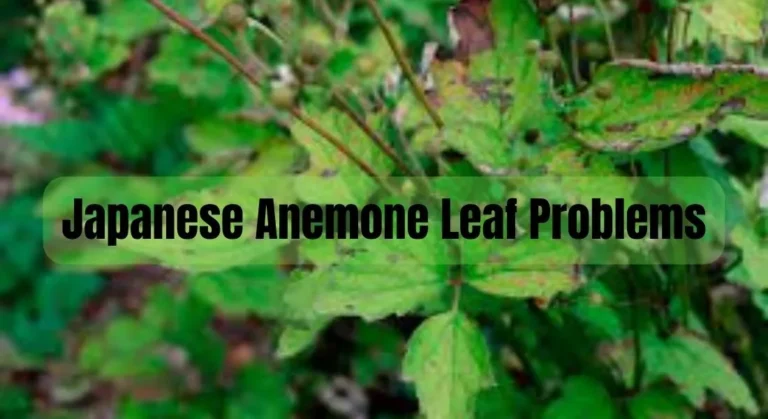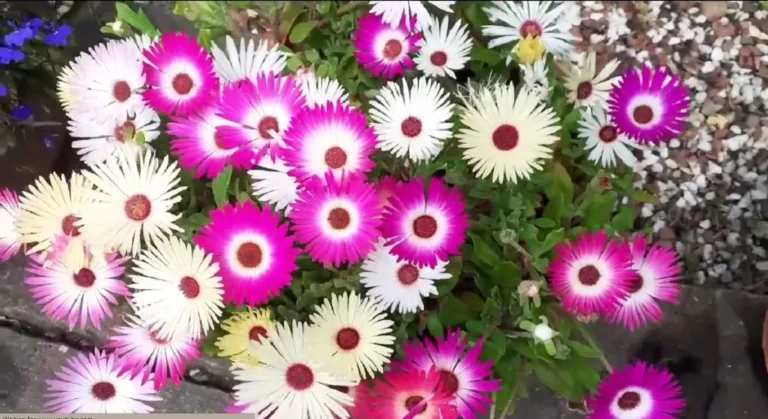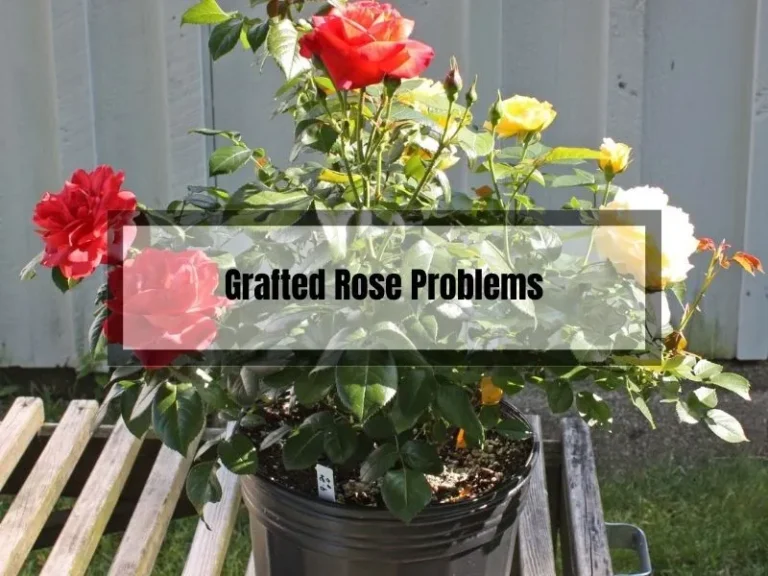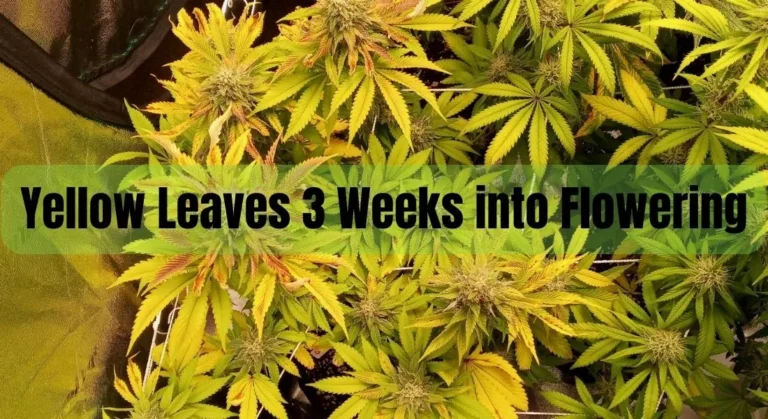Week 7 Flowering: How to Fix Yellow Leaves
Are you noticing yellow leaves on your cannabis plants during week 7 of flowering? Don’t panic, this is a common occurrence and there are several reasons why this may be happening. In this article, we will explore the possible causes of yellow leaves during week 7 of flowering and how to address them.
Yellow leaves can be a sign of nutrient deficiencies, pest infestations, or environmental stress. It’s important to identify the cause early on to prevent further damage to your plants and ensure a successful harvest. As an experienced grower, I have encountered this issue before and have learned how to effectively address it.
By understanding the causes of yellow leaves during week 7 of flowering, you can take the necessary steps to remedy the issue and ensure a healthy crop. Let’s dive in and explore the possible causes and solutions for yellow leaves during this crucial stage of growth.

Understanding Flowering Yellow Leaves
As you progress into week 7 of flowering, you may notice that your plant’s leaves are turning yellow. Don’t panic, this is a common occurrence and can be addressed with the right knowledge and tools. In this section, we will explore the causes, diagnosis, prevention, and treatment of yellow leaves during flowering.
What are Yellow Leaves?
Yellow leaves are a sign that something is off balance in your plant’s environment. Chlorophyll, the pigment that gives leaves their green color, is breaking down, causing the yellowing effect. This can be due to a variety of factors, including nutrient deficiencies, over or under watering, pests, and diseases.
Causes of Yellow Leaves During Flowering
There are several reasons why your plant’s leaves may be turning yellow during the flowering stage:
- Nutrient deficiencies – lack of nitrogen, magnesium, or iron
- Over or under watering – causing root stress and nutrient lockout
- Pests – such as spider mites or thrips
- Diseases – such as powdery mildew or bud rot
- Environmental stress – high or low temperatures, humidity, or light intensity
The Importance of Addressing Yellow Leaves
Yellow leaves can negatively impact your plant’s growth and yield. They can also be a sign of a larger issue that needs to be addressed. It is important to diagnose and treat yellow leaves as soon as possible to ensure the health and success of your plant.
Diagnosing Yellow Leaves
Diagnosing yellow leaves can be tricky, as there are many potential causes. However, by observing the pattern of yellowing and other symptoms, you can narrow down the possibilities. Here are some common signs to look for:
- Yellowing at the tips or edges of leaves – nutrient deficiencies
- Yellowing between veins – iron deficiency
- Yellowing of older leaves – natural aging process or nutrient deficiencies
- Yellowing of new growth – over or under watering
- Yellowing accompanied by spots or discoloration – pests or diseases
Preventing Yellow Leaves
The best way to prevent yellow leaves is to maintain a healthy and consistent environment for your plant. Here are some tips:
- Provide proper nutrients – use a balanced fertilizer and monitor pH levels
- Water properly – avoid over or under watering and ensure proper drainage
- Inspect regularly – check for pests and diseases
- Maintain proper environmental conditions – monitor temperature, humidity, and light intensity
Treating Yellow Leaves
If you have already noticed yellow leaves, there are steps you can take to address the issue:
- Correct nutrient deficiencies – use a nutrient supplement or adjust pH levels
- Adjust watering – ensure proper drainage and adjust frequency and amount
- Address pests and diseases – use organic or chemical treatments
- Adjust environmental conditions – monitor and adjust temperature, humidity, and light intensity
By understanding the causes, diagnosis, prevention, and treatment of yellow leaves during flowering, you can ensure the health and success of your plant. Don’t be afraid to experiment and learn from your own personal experience, as every plant is unique.
How Often Should You Water Your Plants During Flowering?
The frequency of watering your plants during flowering depends on several factors, including the size of your plant, the size of your container, and the humidity in your growing environment.
As a general rule, you should water your plants when the top inch of soil feels dry to the touch. Be careful not to overwater your plants, as this can lead to root rot and other issues. It’s also important to note that cannabis plants may require more water during the flowering stage than during the vegetative stage.
What is the Optimal Temperature Range for Flowering Plants?
The optimal temperature range for flowering cannabis plants is between 68°F and 78°F (20°C and 26°C). Temperatures outside of this range can cause stress to your plants and affect their growth and yield.
It’s important to monitor the temperature in your grow room or tent and make adjustments as necessary. You may also want to consider using a thermometer and a hygrometer to track the temperature and humidity levels.
What is the Best Nutrient Mix for Flowering Plants?
The best nutrient mix for flowering cannabis plants depends on the specific strain and growing conditions. However, most flowering plants require a mix of nitrogen, phosphorus, and potassium (NPK). During the flowering stage, you should reduce the amount of nitrogen and increase the amount of phosphorus and potassium.
It’s also important to use a high-quality fertilizer that contains micronutrients like magnesium, calcium, and iron. Some popular nutrient brands for cannabis growers include General Hydroponics, Fox Farm, and Advanced Nutrients.
By following these tips and answering these common questions, you can help your cannabis plants thrive during the flowering stage. Remember to monitor your plants closely and make adjustments as necessary to ensure optimal growth and yield.
FAQs
If you’re noticing yellow leaves during week 7 of flowering, you’re not alone. It’s a common issue that many growers face. But don’t worry, we’ve got you covered with some frequently asked questions to help you get to the root of the problem.
Can I Still Harvest Plants With Yellow Leaves?
Yes, you can still harvest plants with yellow leaves. However, it’s important to note that yellow leaves can be a sign of nutrient deficiencies or other issues that may affect the quality and quantity of your yield. So, while you can still harvest, it’s best to address the underlying issue to ensure the best possible harvest.
How Can I Tell if My Plants are Over or Under Watered?
Overwatering and underwatering can both cause yellow leaves. To determine which issue you’re dealing with, check the soil moisture level. Overwatered plants will have soil that is consistently wet or damp, while underwatered plants will have dry soil. Additionally, overwatered plants may have drooping leaves, while underwatered plants may have leaves that are wilted or crispy.
Is it Better to Use Organic or Synthetic Nutrients During Flowering?
Both organic and synthetic nutrients can be effective during flowering. However, there are some differences between the two. Organic nutrients tend to be slower acting and may require more frequent application, while synthetic nutrients are faster acting and may require less frequent application. Additionally, organic nutrients can help promote soil health, while synthetic nutrients may be more precise in their nutrient ratios. Ultimately, the choice between organic and synthetic nutrients comes down to personal preference and growing style.
Remember, yellow leaves during week 7 of flowering can be a sign of underlying issues that need to be addressed. By identifying and addressing these issues, you can ensure the best possible harvest. Happy growing!
Conclusion
As you near the end of week 7 of flowering, you may notice some yellowing leaves. This is a common occurrence and nothing to worry about as long as it doesn’t spread to healthy leaves. Here are some key takeaways to keep in mind:
- Yellowing leaves are a sign that your plant is redirecting nutrients to the buds.
- If the yellowing spreads to healthy leaves, it could be a sign of a nutrient deficiency or pest problem.
- It’s important to monitor your plants closely and address any issues as soon as possible.
Remember, every plant is different and may have different nutrient needs. Keep an eye on your plants and adjust your feeding schedule accordingly. Don’t be afraid to experiment and find what works best for you and your plants.
With proper care and attention, your plants will continue to thrive and produce high-quality buds. Happy growing!
Related Posts:





